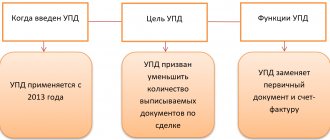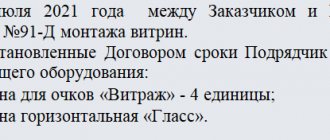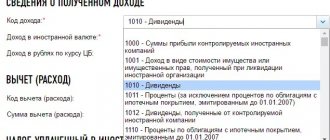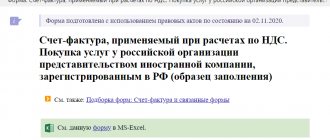The acceptance certificate for completed work is a document necessary for proper accounting and tax accounting. It has a standard unified form KS-2 , which is approved by Resolution of the State Statistics Committee of the Russian Federation dated November 11, 1999 N 100. As the primary accounting documentation, the act must be filled out very carefully, since errors and non-compliance with the requirements can cause claims from regulatory authorities.
The acceptance certificate in form KS-2 is necessarily included in the package of documents that must be signed by the parties who entered into an agreement for construction work. The act can be drawn up for the entire object or its individual parts, therefore, accordingly, it can be represented not only by one, but also by several documents (can be understood by the serial number in the act itself). On our website we provide the opportunity to download the act form and study a sample of filling out KS-2 . You will learn more about the features of drawing up this document from our article.
Purpose of the acceptance certificate for KS-2
The KS-2 acceptance certificate is used to carry out mutual settlements between the contractor and the customer. The document contains an exact list of all construction, installation and other types of work that were performed at the site, as well as the timing and final prices.
The act of acceptance of completed work is used for the subsequent preparation of a certificate of their cost, which also has a unified form - KS-3. These reporting documents are closely related to each other, since they have legal force only in a single bundle. In essence, KS-2 acts as an invoice for payment.
Drawing up KS-2 is the responsibility of the contractor, who must carry out construction and related work in full in accordance with the technical documentation. Therefore, the act is drawn up as an accompaniment to the contract. KS-2 shows that the customer has no complaints about the quality, timing and scope of work, which is confirmed by his signature. But it must be taken into account that, according to the law, the fact that the contractor performed the work can be proven not only by such acts.
The principles for drawing up KS-2 are in many ways similar to those for drawing up KS-3, including regarding the indication of basic data about the parties to the contract, the types and costs of work. Act KS-2 is often also called estimate KS-2 , since, in fact, the document is based on estimated data.
Filling out a certificate of cost of work
A certificate of the cost of work performed and expenses has two sides: front and back. On the title page you need to indicate certain information:
- Information about the organization indicating OKPO codes (they can be found in the extract from Rosstat data). You must write the name and address of the company.
- In the line “Construction” - the name and location of the object without indicating OKPO.
- Opposite the item “Contract” is the number and date of its preparation.
- Serial number and date of registration, and next to it is the reporting period in the format DD.MM.YYYY.
If a certificate is drawn up for a given object for the first time (first percentage), then the serial number of the document should be the number 1. In addition to the requirements of the general procedure for filling out, there are individual requirements of customers. He can ask for a division into the price before and after indexing, indicate codes for a specific type of work: construction and installation, commissioning, etc.
Nuances of filling out the title page
The title page of the document primarily reflects important information about the parties to the transaction. If the agreement does not contain information about the investor (third party), then there is no need to fill in the “Investor” field. The data of the customer and the contractor must be filled out strictly according to the registration and constituent documents of the organizations, including the charter, certificate and extract from the Unified State Register of Legal Entities.
In terms of cost, it is very important that the data comply with the terms of the concluded contracts and are confirmed by design and estimate documentation. Particular attention must be paid to the reporting period. Here you need to take into account what requirements the customer’s accounting department places on it, and indicate dates in accordance with their wishes.
Question with the reporting period
Accounting employees of different customers often have different requirements regarding the reporting period. There are several opinions:
- The scope of the reporting period must correspond to the months, even if the document was not drawn up on the last day of the month. For example, KS-3 No. 1 was signed on 09.27.2020, then it will have a reporting period from 09.01.2020 to 09.30.2020, and certificate KS-3 No. 2 dated 10.19.2020 - from 01.10 .2020 to 10/31/2020
- The KS-3 certificate must cover all days before the signing date, which should be the end date of the reporting period. Then, if KS-3 No. 1 was issued on 09/27/2020, then its reporting period will be from 09/01/2020 to 09/27/2020. The next KS-3 No. 2 then on 10/19/2020 will already be from 09/27/2020 until October 19, 2020
The accounting department of some customers may not attach serious importance to the reporting period. Sometimes the expected interest dates are indicated approximately in the form “no later than the 20th of each month.”
Filling out the table section
The next part of the document is presented in a table consisting of six columns. What information needs to be provided here:
- Column 1. The first column indicates the number of work performed in order.
- Column 2. In the next column, you must indicate the cost item: type of work performed, name of the stage, facility, launch complex or equipment.
- Column 3. If the work has a code, it must be indicated in the third column.
Columns four to six show the cost of work performed and costs for different periods. Columns 4 and 5 are filled in cumulatively, taking into account funds already disbursed from the beginning of the work and the beginning of the year, respectively. Column 6 indicates the cost for the reporting period, which must correspond to the act/acts of KS-2.
After listing all types of work, it is necessary to calculate their final cost. It is entered in the cell opposite “Total”. The line below indicates the amount of VAT, and the next line indicates the cost including VAT.
What does it mean to fill with a cumulative total?
The concept of “cumulative total” involves the calculation of subtotals at the end of each intermediate period. Thus, the data in column 4 “From the beginning of the work” and in column 5 “Since the beginning of the year” are necessary in order to monitor the compliance of the volume of work performed with the estimate documentation (not to go beyond the estimate).
Filling with a cumulative total is considered more complex, but this approach is necessary when performing work step by step. Here you will need to know the amount of work for different periods, as well as create a certificate for each acceptance certificate, while each subsequent one reflecting information from the previous one. Eg:
- The first part of the contractor's work costs 35,000 rubles. The reporting period is 01.08.2020-31.08.2020. For them, an acceptance certificate for KS-2 was drawn up, and then a certificate for KS-3, where the amount of 35,000 rubles was indicated in columns 4, 5 and 6.
- The second part of the work cost 20,000 rubles. Reporting period – 09/01/2020-09/30/2020. Here, when drawing up the KS-3 certificate, in column 4 the amount of 35,000 + 20,000 = 55,000 rubles is indicated. This is the price of work on an accrual basis. Column 5 shows the amount for the entire year: if no more work was performed previously, then the amount will also be 55,000 rubles. in this case, in column 6 you need to indicate the amount for the reporting period - 20,000 rubles.
Thus, the KS-3 certificate allows you to take into account separately completed work and indicate changes relative to the beginning of the year and the previous acceptance certificate.
How to complete the certificate
When listing costs, it may be necessary to indicate additional work. They do not need to be decrypted if they are decrypted in other documents, for example, in an estimate or application. But experts recommend listing and describing everything in detail.
After specifying the work and calculating all types of costs, all that remains is to sign the certificate. The customer (general contractor) and the contractor (subcontractor) must leave their signatures. The corresponding lines indicate the position, signature and its decoding.
The document can be signed by a manager or an authorized representative on behalf of the customer, and on behalf of the contractor - by a manager or employee responsible for the execution of the work. The certificate is certified by a seal on both sides.
Basic rules for drawing up the acceptance certificate for KS-2
The main document for issuing the KS-2 is the Logbook for the work performed, which is also drawn up in a unified form - KS-6a. The journal is used as a cumulative document in which all work performed during the year is recorded. It must be carried out at any construction site. The absence of a log may be a reason to believe that KS-2 and KS-3 were compiled incorrectly.
Conventionally, the form of the acceptance certificate for completed work can be divided into 2 parts:
- Title page. The first page of the act contains information about all parties to the contract, as well as information about the facility under construction.
- Table. It indicates basic data on the types of work, their prices, units of measurement, quantity and cost. The table summarizes the results indicating the final cost of the work.
Important nuances of drawing up the KS-2 act
To fill out the KS-2 act, you can use computer programs: Microsoft Excel (the sample is most often presented for editing in this program), “1C: Accounting”, “Kontur”, “Class 365”. This means that the document can be presented not only in paper, but also in electronic form. But then an electronic signature must be used for it. The ability to automate compilation in software products today is of great help to many organizations, as it saves time and reduces the number of errors due to the human factor.
In 2013, a law was adopted according to which the forms of primary accounting documents can be determined by the head of the company. This made uniform forms optional. The company has the right to develop its own forms for such documentation. It must contain details, a list of which can be found in clause 9 of the Federal Law of December 6, 2011 N402-FZ. The code, number and name of the form must be stored in the act. Removing these and other required details is not permitted.
Finalization of the KS-2 form according to the law
The KS-2 form itself can be modified taking into account the needs of the contractor, but without violating current standards. Here it is necessary to take into account the Letter of the Ministry of Finance of the Russian Federation dated 07/08/2011 No. 03-30-06/1/414, according to which rows or columns cannot be deleted from the form, but only new ones can be added, their width can be changed for ease of placement and processing of the necessary data.
Changes made are documented in the relevant organizational and administrative document of the organization. In practice, it is still convenient to use unified forms, since, despite the law passed in 2013, they still remain in demand in most organizations.
What is form No. KS-2?
Forms No. KS-2 and No. KS-3 are among the primary documents for accounting for repair and construction work. They must indicate the investor, customer, contractor (subcontractor) and their addresses, the name and address of the construction site, the name of the object, and the estimated cost.
Starting from 2013, the forms of primary accounting documents used (with the exception of government organizations) are determined by the head of the economic entity (clause 4 of article 9 of Law No. 402-FZ). These can be unified forms or your own, developed in compliance with the mandatory details of the primary documents. When using unified forms, you cannot delete the existing details of such documents (Letter of the Ministry of Finance of the Russian Federation dated 07/08/2011 No. 03-03-06/1/414), you can only supplement the form with new lines or columns.
When developing your own forms of primary accounting documentation, it should be taken into account that the forms of primary accounting documents established by authorized bodies in accordance with other federal laws and on their basis remain mandatory for use (Information of the Ministry of Finance of the Russian Federation dated December 4, 2012 No. PZ-10/2012) .
But in practice, unified forms No. KS-2 and No. KS-3 are used, especially since these are the forms that are mentioned in the explanations and acts of various departments (Orders of the Ministry of Sports of the Russian Federation dated March 28, 2014 No. 158, Rosrybolovstvo dated October 14, 2011. No. 1015, Ministry of Energy of the Russian Federation dated September 26, 2011 No. 418).
Form No. KS-2 is used for customer acceptance of completed contract construction and installation work for industrial, residential, civil and other purposes.
Let us immediately note that the act in form No. KS-2 and a certificate of the cost of work performed in form KS-3 (which, in turn, is filled out on its basis) are adequate evidence of the completion of work under a construction contract.
GET SRO ADMISSION IN MOSCOW
That is, in essence, form No. KS-2 serves as an invoice for payment.
At the same time, according to the position of the Armed Forces of the Russian Federation, set out in the Determination of July 30, 2015 No. A40-46471/2014, certificates of completed work, although they are the most common documents in civil circulation that record the contractor’s performance of work, at the same time are not the only means of proving relevant circumstances.
Important!
The law does not provide that the fact that the contractor has completed work can be proven only by acts of completion (Resolution of the Central District Administration of June 29, 2018 No. A14-7683/2017).
How to fill out the cover page of the work acceptance certificate
Filling out the title page of the KS-2 is not difficult, since it is enough to enter data about the organizations and the object. This page has separate lines for all the information:
- Investor. Information about the investor is indicated only if there is one. Typically, an agreement is concluded between the customer and the contractor, and the customer in this case acts as an investor, so there is no need to duplicate information.
- Customer (general contractor). Enter the full name of the organization in accordance with the registration documents, as well as the organizational and legal form, contact information (address, phone number) and OKPO.
- Contractor (subcontractor). Fill in the same way as the line where the customer is indicated.
- Construction and object. You must enter the name and address of the property.
Next, you need to enter the number of the work agreement (contract) concluded between the organizations. The title page also indicates the number and date of the document, as well as the reporting period. The OKUD code for KS-2 is always the same - 0322005. It serves to summarize and systematize information during automated processing of documentation.
How to correctly indicate the reporting period
In our article about the certificate of cost of completed work KS-3, we touched upon the issue of correctly indicating the reporting period. It is better to immediately clarify this information with the customer’s accounting department, since its employees may have certain requirements regarding dates. There are two options for specifying the reporting period.
- By month. For example, the acceptance certificate was drawn up on November 14, 2020, then the reporting period should indicate November 1, 2020-November 30, 2020. The next reporting period will begin on December 1, 2020 and will end on December 31, 2020, respectively.
- With the end of the reporting period on the day of drawing up the acceptance certificate. In this case, if the act was drawn up on November 14, 2020, the reporting period will be from November 1, 2020 to November 14, 2020. The following reporting period will begin on November 14, 2020 and will end on the day the acceptance certificate is drawn up.
Some accounting departments do not have strict requirements for reporting periods. In this case, you should choose one of the methods and adhere to it when drawing up all acts, so that there is no confusion in the deadlines.
Step-by-step instructions for filling out
Step 1. Fill out the title part.
Basic rules for filling out KS-3 regarding the title block:
- information about the customer, contractor and investor (if necessary) - full name and standard contact information;
- code from the all-Russian OKPO classifier;
- name and address of the construction site;
- details of the contract (agreement), which is the basis for the construction;
- current number and date;
- the reporting period during which construction was carried out (repair, installation, etc.).
Step 2. Fill out the table.
After completing the header, you must fill out the tabular part of the form in the following columns:
- Number in order.
- Detailed description of the type of work, object and specific stage, equipment, materials. If such a condition is provided for in the contract and design and estimate documentation, then the work performed is differentiated by the types of technical equipment used.
- Work type code (if available).
- Cumulative price.
- The cost determined by the contractor at the beginning of the reporting period (year).
- The total cost of the completed contract for the reporting period established by the contract.
At the end of the tabular part, values are entered in the “Total” lines - the final amount of construction (repair, installation) performed with allocated VAT at the rate established for the contractor in accordance with current legislation, and the cost including VAT.
Step 3. We certify the document.
At the end of the document, the signatures of the responsible persons from both the contractor and the customer are affixed, and the certificate itself is certified by the seals of the organizations.
Filling out the table in the KS-2 acceptance certificate
The next sheet of the act contains a table where it is necessary to list all the work performed. There is a line in front of the table in which you need to enter the estimated (contractual) cost, which must correspond to that specified in the contract. The amount can be presented in numbers; there is no need to decipher it in words.
The table in the act consists of 8 columns, which indicate the following information about the work:
- serial number (1);
- position number in the estimate (2);
- name (3);
- unit price number (4);
- in what units is it measured (m2, m3, tons, pcs., etc.), (5);
- quantity(6);
- unit price (7);
- total cost (8).
The tabular part reflects the data given in the estimate for construction work. Moreover, the table can accumulate values from several estimates.
Features of filling out the tabular part
To get the total cost of work (8), you need to multiply the values in columns (6) and (7), i.e., multiply the number of works by the unit price. The number in column (6) must in no case be stated as a fraction or percentage of the total to be completed. The price in column (7) is set in accordance with the collections of federal unit prices (FER). If the contract prices are fixed, then a dash is placed in column (7). In this case, column (8) is also indicated based on indicators taken from the FER collections.
It is important to write the title of the work in column (3) as clearly as possible, without abbreviations or combining two types into one. In case of such a violation, the customer has the right not to sign the document and request that the KS-2 again. After filling out all the lines, it remains to calculate how much was spent on all the work. This amount is recorded at the intersection of the column “Cost, rub.” and the “Total” lines.
It is important that in the KS-2 estimate the cost is indicated without VAT. If necessary, the amount including VAT can be added, but usually it is already given in the KS-3 certificate. Here is the amount without VAT (taxable base) and with VAT at the rate regulated by law, i.e. 20%.
Question indicating the cost of work and deduction of VAT
The final cost of the work in the KS-2 certificate and their cost in the KS-3 certificate must match. But in some cases, their divergence is allowed. This is possible in accordance with the Letter of Rosstat of the Russian Federation dated May 31, 2005 No. 01-02-9/381. It says that the cost of work in KS-2 is indicated in accordance with what is provided for in the estimate, and in KS-3 it will be the estimated cost, taking into account price changes, if this is provided for in the contract.
We mentioned this in our article about the KS-3 certificate. There are often cases when construction lasts more than one year, which is why the cost of work and building materials has changed. Therefore, the discrepancy in cost between KS-2 and KS-3 is not a violation.
It is equally important to take into account that if the contract does not provide for phased acceptance of construction work, but interim acts KS-2 are drawn up, the customer may face a refusal to accept VAT for deduction. Intermediate KS-2 are usually used for reporting specifically to the customer. To eliminate problems with VAT deduction, it is worth stipulating in the contract for the phased delivery of work.
How to correctly fill out forms KS-2 and KS-3 under the simplified tax system
The contractor applying the simplified taxation system won the tender. The contract was concluded at the price we proposed (since we do not pay VAT, VAT was not taken into account in the offer price).
How to correctly fill out forms KS-2 and KS-3 when paying for work performed?
Answer
In connection with the release of the information letter of the Ministry of Finance of Russia dated May 15, 2019 No. 24-01-07/34829 on the issue of the conclusion and procedure for payment under a contract to a contractor applying a simplified taxation system, some specialists and officials of the Customers have a misconception about the procedure for applying Part 13 Article 34 of Law 44-FZ “On the contract system in the field of procurement of goods, works, services to meet state and municipal needs.”
From July 1, 2018, a change was made to Part 13 of Article 34 of Law No. 44-FZ, according to which, as mandatory conditions, contracts must include a clause reducing the amount of payment by the amount of tax payments to individuals and legal entities, if such payments are subject to payment to the budget by the Customer
(Clause 2 of Part 13 of Article 34 of Law No. 44-FZ). The need for this change was due to the inclusion in the list of executors under contracts of legal entities that were not included in the previous version of Part 13 of Article 34 of Law No. 44-FZ.
The Customer's deduction of the tax amount from the contract price in relation to the legal entity performing the contract under the current tax legislation is provided for only in relation to a limited range of transactions.
Situations in which the Customer must fulfill the duties of tax agents for the calculation and payment of VAT are listed in Article 161 of the Tax Code. The specifics of calculating the tax base are also given there. Most of the listed cases are not within the scope of state (municipal) procurement.
In all other cases, the Tax Code of the Russian Federation or other provisions of tax legislation do not provide for the Customer’s obligation to withhold the corresponding amount of VAT from the price payable to the performer (Contractor) and independently transfer it to the budget.
Thus, if the Contractor is not a VAT payer (due to his use of a simplified taxation system), the mere mention of VAT in the draft contract does not mean that the price payable must be reduced by the Customer by the corresponding amount of VAT.
The state (municipal) contract is concluded and paid by the Customer at the price of the procurement winner, regardless of the application of the winner’s taxation system. The amount stipulated by the contract for the scope of work performed must be paid to the winner of the purchase in the amount established by the contract.
If the organization that is the winner of the procurement uses the simplified taxation system (STS) and the parties have not reached an agreement to reduce the contract price (without changing the scope of work (services) by the amount of VAT or other value, including expressed as a coefficient, provided that such the possibility of changing the terms of the contract was provided for in the procurement documentation and the contract, then the final price of the procurement winner is written in the text of the state (municipal) contract with the wording:
“The cost of work under this Contract is ___ rubles.
__
kopecks,
VAT is not assessed due to the use of a simplified taxation system (clause 2 cm. 346.11 of the Tax Code of the Russian Federation).”
Since the initial (maximum) price of the contract is determined on the basis of the estimate, the amount of VAT, which is part of the contract price (including VAT), is initially highlighted as a separate line in the estimated cost. In this case, the Contractor must be paid the full contract price using the simplified tax system, without allocating the amount of VAT and without the latter issuing an invoice, with the wording in the payment documents “VAT not subject to.”
Thus, a situation arises when the amount to be paid, including under the interim “Acceptance Certificates of Work Completed” in Form KS-2 and “Certificates of the Cost of Work Performed and Expenses” in Form KS-3, must correspond to the price of the concluded contract, but the set of items according to the estimate does not cover the difference between the price of the concluded contract and the total for the items of the estimate (acts).
If in the estimate documentation the cost is determined taking into account VAT, this does not mean that the party obligated to pay for the work under the contract has grounds to adjust the contract price downward unilaterally, or to pay for the work withholding VAT amounts (minus VAT ), citing the Contractor's lack of relevant tax obligations. Moreover, even in a situation where the contract stipulates that its price is determined taking into account VAT, a reduction in the amount of payment under the contract due to the Contractor’s application of a simplified taxation system will be unlawful, since this contradicts the direct prohibition on changing the terms of the contract (including conditions on its price) contained in Part 2 of Art. 34 of Law No. 44-FZ.
The mere indication in a contract, estimate or certificate of completion of work that the price of work includes (or does not include) VAT is not essentially a condition of the contract, but only indicates one of the components of the contract price, without affecting the amount of payment for work by contract.
According to the letter of the Ministry of Finance of Russia dated November 20, 2017 No. 24-01-10/76771 “On reducing the contract price proposed by the winner of the procurement applying the simplified tax system by the amount of VAT”:
“...taking into account that the price of a concluded contract can be changed only in cases specified in Article 95 of the Law on the Contract System, when paying for goods (work, services) supplied (performed, rendered) under a contract concluded with a procurement participant, in including those who are taxpayers applying the simplified taxation system, the contract price is not reduced by the amount of VAT and the goods supplied (work performed, services rendered) are paid at the price specified in the contract, taking into account all overhead costs, as well as taxes and fees.”
According to the law on the contract system, a state (municipal) contract is concluded and executed regardless of the taxation system applied. If the winner is not a VAT payer (is on the simplified taxation system), then when concluding a contract, when indicating the contract price, a dash is placed instead of the VAT amount, and when paying for work performed, the contract price is not reduced by the amount of VAT and the work performed is paid at the price indicated in the contract.
If the winner is not a VAT payer (is on a simplified taxation system), we recommend that payments for work performed be made taking into account a coefficient calculated as the ratio of the contract price proposed by the winner to the initial (maximum) contract price formed by the Customer, excluding VAT.
For example, the initial (maximum) contract price is 120 thousand rubles, including VAT - 20 thousand rubles.
The price offer of the winner who is not a VAT payer is 110 thousand rubles.
Conversion factor = 110/(120 - 20) = 1.1.
It is recommended that the specified procedure for settlements for work performed with a Contractor who is not a VAT payer (who is on the simplified taxation system) be included in the draft contract for the performance of work.
For acceptance of completed work, form No. KS-2 “Act on acceptance of completed work” is used, approved by Decree of the State Statistics Committee of Russia dated November 11, 1999 No. 100, which does not provide for the allocation of the amount of VAT. For payments for work performed, the unified form No. KS-3 “Certificate of the cost of work performed and expenses” is used, approved by the same resolution of the State Statistics Committee, and where the amount of VAT is reflected on a separate line. If the winning bidder is not a VAT payer (is on the simplified taxation system), then a dash is placed in the VAT line of the KS-3 form.
Completion of work acceptance certificate KS-2
The tabular part of the act is presented on two sheets, since the list of works usually includes many items. On the second page of the KS-2 form, at the end of the table, the line “Total for the act” has been added, where you need to add the “Total” from both pages. After this, the document must be signed by the contractor (“Passed”) and the customer (“Accepted”). This can be done by their representatives: on the contractor’s side, the person responsible for the work; on the customer’s side, the head of the company or his authorized representative.
The main thing when signing is to indicate the position, sign and indicate its decoding. In addition to signatures, the act must be certified by a seal on both sides. The only exceptions are individual entrepreneurs (IP), who are not required to use their printing activities. The correctness of the preparation of primary documentation is important, since if violations are detected and in the absence of documents in general, the head and accountant of the organization may receive administrative punishment.
Features of the subsequent use of the KS-2 acceptance certificate
When the contractor fulfills his obligations under the contract and completes construction work, he draws up an acceptance certificate in the KS-2 form. The customer must check and accept these works and, if he is satisfied with everything, sign the document drawn up. After this, and often simultaneously, the customer draws up a certificate of the cost of work performed and expenses KS-3, without which the customer’s accounting department cannot pay for them.
The KS-2 act is usually presented in two copies: one remains with the contractor, and the other is transferred to the customer. If there is a third party to the agreement in the form of an investor, she has the right to demand a separate copy for herself, of which either of the two parties must be notified in writing. According to the storage rules, the KS-2 acceptance certificate, as well as the KS-3 certificate, must be stored for at least 5 years from the date of execution and signing.
Sample KS-2 with customer-supplied materials
The following situation often occurs: the general contractor engages subcontractors to perform a certain type of work. Materials for the execution of work are provided by the general contractor. It is necessary to somehow report on the consumption of these materials, and here the question arises - is it possible to reflect them in the KS-2 form?
Reflection of tolling materials in the act is not prohibited. In this case, the company can determine the specific scheme of work and filling out the document independently.
Unified form KS-2 - sample filling
Order a work acceptance certificate for KS-2
The ABC-Project company offers services for the preparation of the necessary construction documentation, including primary reporting documents, which include the KS-2 work acceptance certificate. Its correct completion is important, since in the future the data is necessary for the preparation of another mandatory document - the KS-3 certificate. We can competently prepare these and other documents you need, which will allow you to quickly resolve all issues regarding the completed construction.
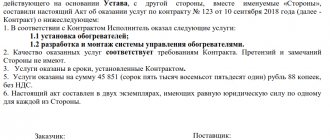

![My business [CPS] RU](https://belovocity.ru/wp-content/uploads/moe-delo-cps-ru-330x140.jpg)
